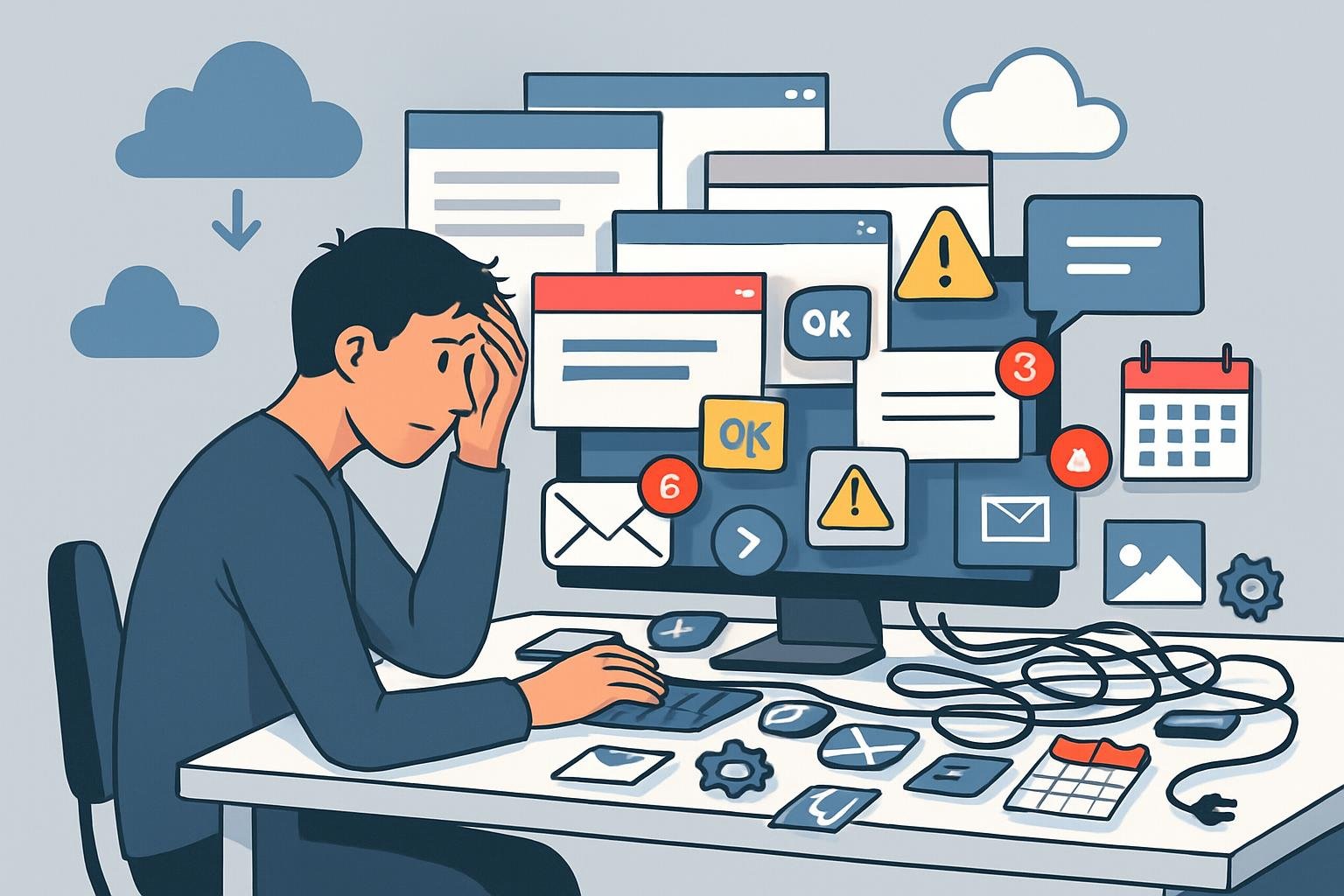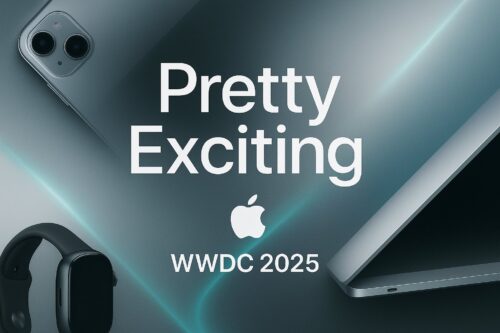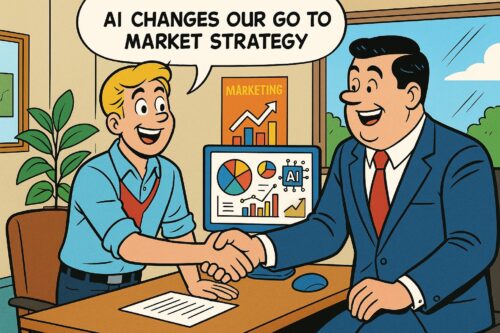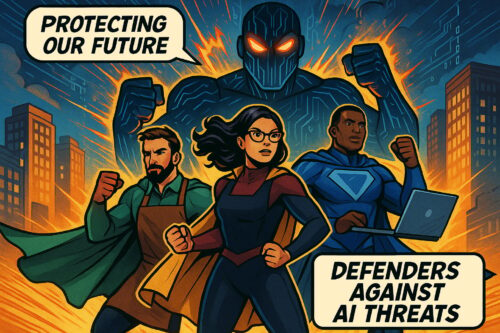Understanding Digital Hoarding & Its Impact and Solutions
Digital hoarding means collecting too many digital files, emails, images, and other virtual stuff until it feels overwhelming or stressful. Keeping extra files might seem harmless initially, but the pile-up can make it tough to find what you need and might even spark anxiety or frustration.
As your digital world gets messier, it can chip away at your well-being and productivity. Most people don’t realize how much they save until their storage is full, their devices slow down, or they feel mentally worn out.
Maybe you’ve got thousands of old emails, duplicate photos, or outdated documents that no longer serve any purpose. If you have trouble letting go of files, you might be dealing with digital hoarding—a problem that’s only getting more common as everything moves online.
Key Takeaways
- Digital hoarding is saving unnecessary digital files in excess.
- It can mess with your mental well-being and efficiency.
- Spot the signs early to keep digital clutter from taking over.
Defining Digital Hoarding
Digital hoarding happens when you keep accumulating digital files, hurting your mental well-being or making staying organized impossible. Knowing what it looks like and where it comes from can help determine if it’s creeping into your digital life.
Characteristics of Digital Hoarding
You might notice digital hoarding if you can’t bring yourself to delete old files, emails, or images—even when they’re useless. It often appears as piles of documents, endless photos, music, emails, and downloads you never touch.
Some key signs:
- Hesitation or refusal to delete things
- Letting files pile up endlessly
- Digital clutter is making you less efficient
- More stress or anxiety than you’d like
Too many files can slow down your devices and make it a pain to find what you need. People often hoard digital stuff because they fear losing information, feel attached, or think they might need it someday. Over time, all those messy files can really crank up your stress, as Psychology Today points out.
Types of Digital Hoarding
Digital hoarding can look different depending on what you keep and why. Here are a few common types:
1. Sentimental hoarding: Hanging onto digital photos, messages, or videos for emotional reasons.
2. Data hoarding: Collecting articles, e-books, and files because you’re afraid you’ll need them.
3. Fear-based hoarding: Saving emails and documents “just in case” they matter someday.
4. Collecting for utility: Downloading apps or music and rarely deleting the ones you don’t use.
People often mix these patterns—maybe you save emails for sentimental and practical reasons. The one thing in common? Just don’t want to delete digital stuff, as UCLA Health describes.
History and Evolution
Digital hoarding didn’t exist until personal computers and cloud storage became normal. It grew out of traditional hoarding but deals with information, not physical things.
Smartphones, laptops, and cheap storage made it easy to keep everything without considering the long-term mess. As device and cloud storage exploded, so did the urge to save it all, leading to digital clutter. Only recently have researchers started connecting the dots between digital and physical hoarding.
Common Causes of Digital Hoarding
Several things feed into digital hoarding: personal habits, tech advances, and outside expectations. Getting a handle on why it happens can help you spot what’s fueling your own clutter.
Psychological Factors
Anxiety and emotional attachment play a significant role. You may keep photos, emails, or files because you fear losing memories or information. Fear of missing out (FOMO) can push you to save things you need later.
It’s tough to delete digital stuff with sentimental value. Some people feel a short burst of relief from organizing files, but that can just lead to bigger, messier collections down the road. This emotional cycle makes it hard to let go and keeps stress hanging around, as described in this article on digital hoarding symptoms.
Technological Advancements
Cheap storage, cloud backups, and powerful search tools make it easier than ever to hang onto files. Devices let you store thousands of things without effort, so you don’t need to clean up.
Automatic backups and syncing can double up your files without you even noticing. Since storage isn’t as limited as it used to be, you might not feel the consequences immediately, and the clutter grows. Eventually, it can feel like too much to even start cleaning up.
Workplace and Social Influences
Modern jobs often require you to keep messages, documents, and data for legal or organizational reasons. This can make you hesitant to delete anything, just in case it’s needed. Collaboration tools and group emails are only added to the pile.
Social pressure also plays a part. Maybe you should keep photos, social media posts, or group chats to hold onto memories. These habits at work and in your personal life make it easy to save everything and hard to delete, as highlighted in research on digital hoarding behavior.
Digital Hoarding vs. Physical Hoarding
Both digital and physical hoarding involve collecting too much stuff, but they’re not the same. The reasons, effects, and ways to manage them differ, bringing unique challenges.
Key Differences
Digital hoarding happens on your devices. You keep many files, emails, or media, even if they’re useless. Since these things aren’t visible, it’s easy to ignore the problem.
Physical hoarding creates a visible mess. Your living space fills up with objects, making using or moving around tough.
Physical hoarding can lead to dangers like fire risk or inadequate sanitation. In contrast, digital hoarding is more likely to cause stress, anxiety, or tech headaches, like slow devices or lost files.
It’s harder to see the impact of digital clutter, and adding more storage is usually simple, which sometimes just lets the problem grow. For more on these contrasts, check out this article.
Similarities
Both types of hoarding come from not wanting to throw things away because you’re anxious about losing them. Whether it’s files or physical stuff, letting go can feel uncomfortable.
As you collect more, sorting or deleting gets harder, and the mess grows. That avoidance cycle is tough to break.
Mental health plays a big part in both. Guilt, distress, and feeling overwhelmed are common for people dealing with digital or physical hoarding.
Addressing either problem usually takes regular decluttering, making decisions more consistently, and sometimes even professional help. Cognitive behavioral strategies can help with both, as discussed in this piece.
Impacts of Digital Hoarding
Digital hoarding doesn’t just add clutter—it can mess with your well-being and make daily tasks much harder. The fallout goes beyond being annoying; it can affect your mental health and productivity.
Effects on Mental Health
When you let digital files and emails pile up, your stress and anxiety can climb. The nonstop notifications, scattered files, and frustration of not finding what you need all take a toll.
People dealing with digital hoarding often say they feel mentally overloaded and can’t focus or relax. The mess can feed perfectionism and fear of losing something valuable. Studies show digital clutter can spark ongoing worry and chip away at your emotional well-being, according to research on digital hoarding’s mental health impact.
Productivity and Performance
Digital hoarding makes you less productive by making it harder to find what you need. You might waste time hunting through folders or scrolling past junk. As your storage fills up, devices slow down, making work feel like slogging through mud.
Over time, this digital chaos can hurt your job performance and daily routines. Important emails get buried, deadlines get missed, and teamwork suffers if you can’t find or share files easily. According to a study on digital clutter and productivity, digital hoarding can make collaborating with others a real headache.
Recognizing Signs of Digital Hoarding
Spotting the signs of digital hoarding early can help you get ahead of the mess. Certain habits and behaviors are red flags that it’s time to act before things get out of control.
Behavioral Indicators
If you keep piling up digital files—documents, emails, images—even when they’re unimportant, that’s a warning sign. Feeling anxious about deleting anything and always putting it off might mean you’re dealing with digital hoarding.
You might also notice it’s getting harder to find what you need. That leads to wasted time, frustration, and stress. People often save multiple versions of files or keep every email, even when most of it is useless.
Common behavioral signs include:
- Not deleting files, even after years of not using them
- Feeling stressed or anxious about deleting
- Saving everything “just in case”
- Struggling to find important stuff in a sea of excess files
Catching these habits early can keep things from spiralling. For more on the psychological side, check out the Psychology Today digital hoarding article.
Common Digital Clutter Examples
Digital hoarding doesn’t stick to just one platform or file type. Maybe you’ve got browser tabs multiplying like rabbits or a desktop so full of icons you can’t find anything.
Email inbox overflowing? Old downloads piling up with no end in sight? Yeah, you’re not alone.
Key examples include:
| Digital Area | Examples |
|---|---|
| Browser | Dozens of open tabs and bookmarks |
| Desktop | Excess icons and shortcuts |
| Photos | Hundreds of duplicate images |
| Documents | Old, irrelevant files and drafts |
| Thousands of unread messages |
All these unmanaged files add up and make digital life messy. To dig deeper into these clutter types, check out the Wikipedia page about digital hoarding.

Managing and Preventing Digital Hoarding
Staying on top of digital clutter is tough, but a few systems can make things easier. Organization methods and digital tools can help you keep files, emails, and media under control.
Organizational Strategies
Start small: set a goal for your digital space. Figure out what you actually need and what’s just taking up room.
Make folders for different projects or file types. Give them names that make sense to you—no more “New Folder (3)” stuff.
Try to stick to a naming system, and add dates if necessary. It honestly makes searching later so much less painful.
Set aside time to review and delete old files. Even a quick checklist helps:
- Weekly: Delete unneeded downloads
- Monthly: Organize or archive emails
- Quarterly: Review large files and storage space
If you think you might need something later but not right now, just move it to an external drive or a cloud folder. That way, your primary device isn’t buried under stuff you barely use. Being proactive here really limits clutter and lowers the risk of digital hoarding.
Technological Tools for Organization
Specialized software can really help keep things tidy. Cloud storage like Google Drive, Dropbox, or OneDrive sorts and syncs files across devices, so you don’t end up with duplicates everywhere.
Try email clients or plugins that filter messages by sender, date, or subject. Apps like Clean Email and Unroll. I’ll sort your inbox and unsubscribe you from all those newsletters you never read.
File management tools like TreeSize or WinDirStat show you what’s hogging your disk space. These tools make it easier to spot what you can delete or move. More tips and details are in the methods for decluttering digital spaces.
When to Seek Professional Help
Sometimes, digital clutter starts messing with your life in ways you didn’t expect. If you spot certain warning signs, it might be time to get a little outside help.
Signs that indicate you may need help include:
- Difficulty deleting files, even if they’re outdated
- Feeling overwhelmed or anxious about organizing digital items
- Digital clutter is causing problems at work, school, or home
- Trouble finding essential documents because of too much data
- Strained relationships or isolation tied to your digital habits
If digital hoarding leads to insomnia, lost productivity, or feeling disconnected from people, those are bigger red flags. Here’s an overview of digital hoarding and mental health effects if you’re curious.
A mental health professional or therapist can help you spot patterns and give you strategies to manage digital clutter. You might get therapy, digital organization counselling, or join a support group focused on hoarding behaviors.
Benefits of professional help:
| Support Type | How it Helps |
|---|---|
| Therapy | Address emotional causes |
| Organization Tips | Learn practical digital decluttering |
| Support Groups | Gain encouragement and accountability |
Reaching out for assistance isn’t a failure. It just means caring for yourself and trying to have a healthier relationship with technology.
Future Trends in Digital Hoarding
As technology keeps moving forward, digital hoarding habits are shifting too. With devices and cloud services offering more storage, you might find it easier than ever to stash away files, photos, and emails.
It’s tempting to keep everything, since there’s rarely an immediate hit to performance. But that doesn’t mean it’s always a good thing.
You’ll notice artificial intelligence popping up more in the fight against digital clutter. Some tools learn your habits and suggest files you could probably delete.
More innovative algorithms keep getting better at spotting duplicate or outdated files. It’s a little eerie how well they can tell what you don’t need anymore.
Companies are rolling out apps and platforms that promise to help with digital overload. Features like automated organization, file deduplication, and those slick visual dashboards are popping up everywhere.
They all aim to make keeping tabs on your digital stuff easier. Whether they’ll actually help you let go of things is another story.
Here are some possible changes to watch for:
- Increased use of cloud storage
More data is moving to the cloud, and that can make deleting files feel less urgent. Honestly, it might just make digital hoarding even more common. - Heightened focus on digital well-being
Platforms might start nudging you with analytics and reminders about your growing digital piles. It’s all supposed to encourage better habits, but who knows if it’ll actually work? - Integration with productivity tools
Digital organization features could show up right inside your favorite work apps. That way, you won’t have to go out of your way to deal with digital clutter, at least theoretically.
Some studies say personality traits like perfectionism might drive digital hoarding in the future, especially as our lives get more online. If you’re curious, check out this review on vulnerability factors in digital hoarding behavior.




